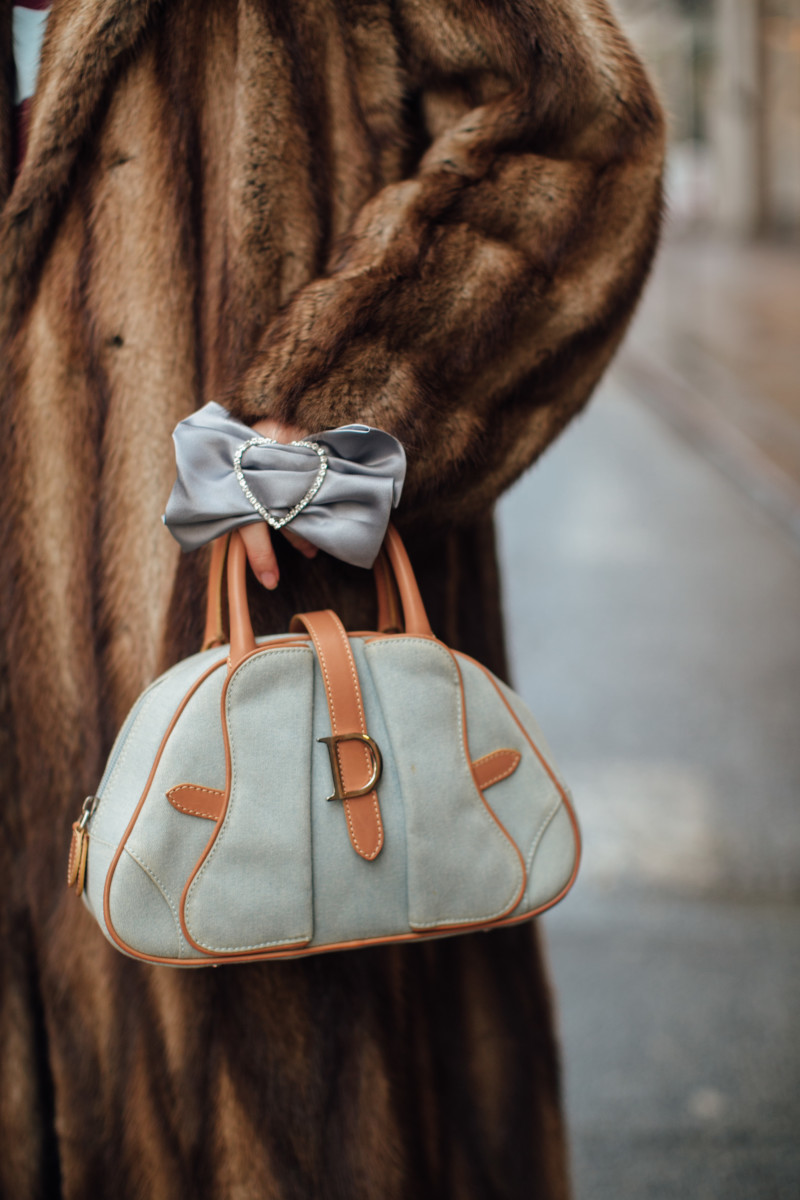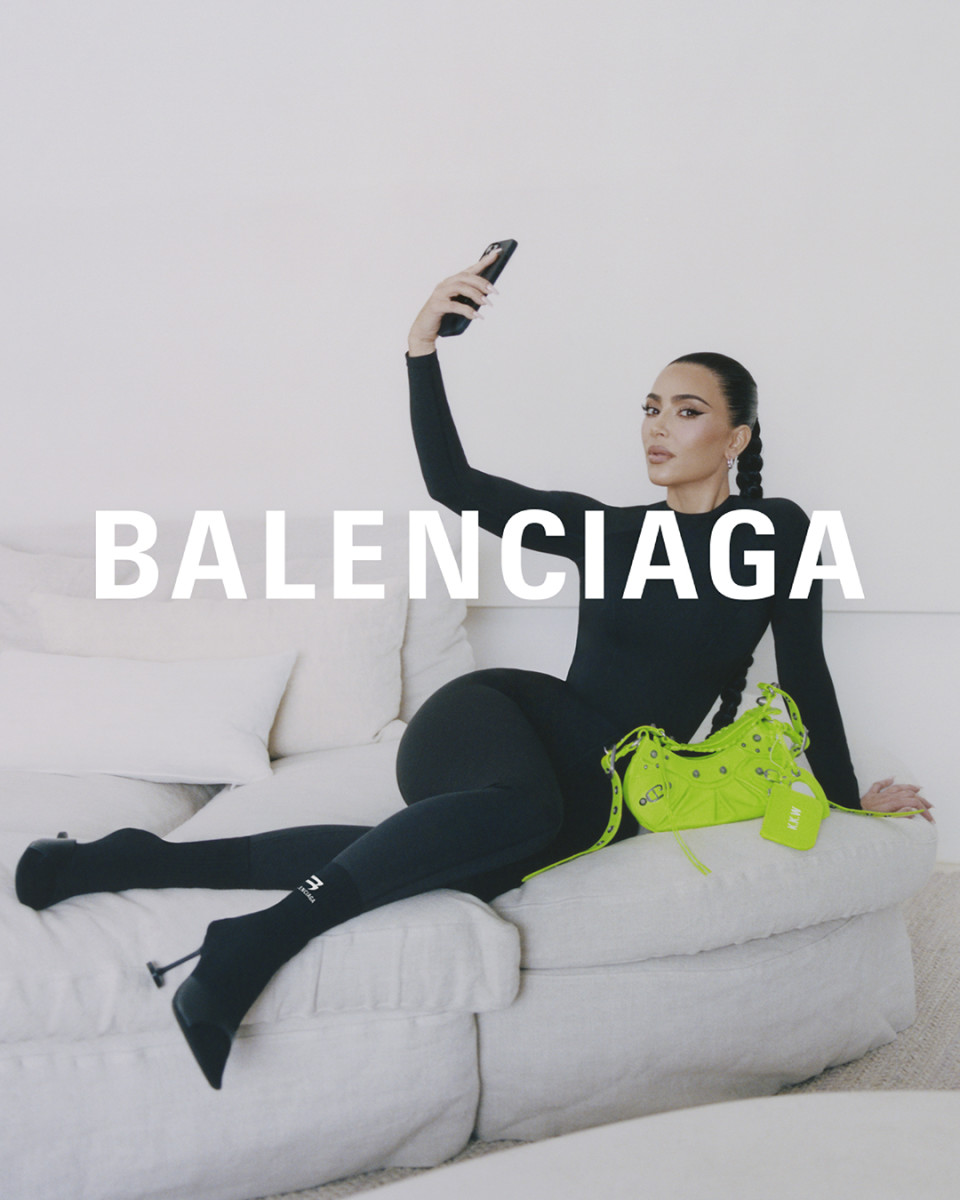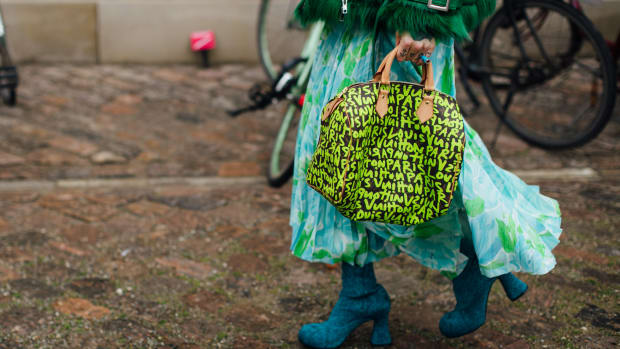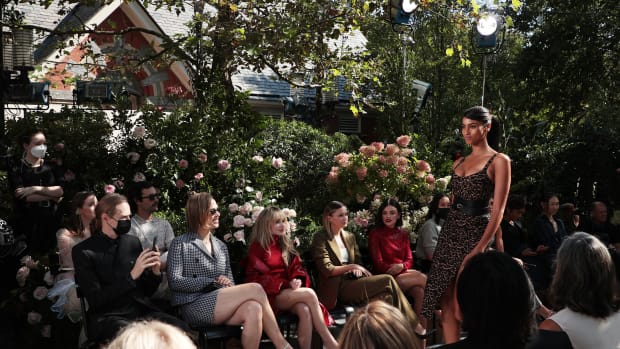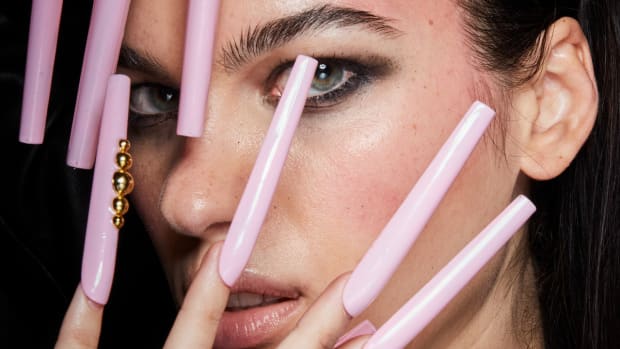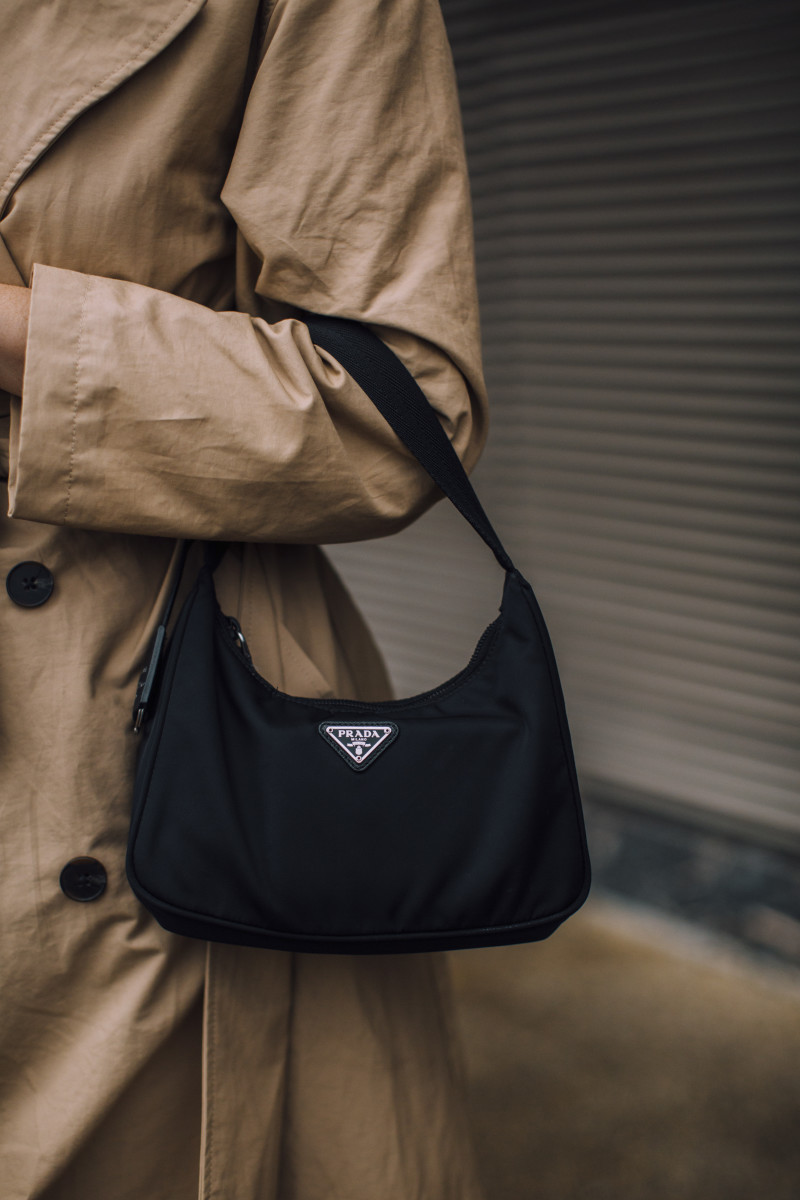In 2015, Lyuu Hoffmann picked up their first vintage Dior fixer-upper, a pink Oblique Trotter Bowling bag covered in the house's signature logo print. They quickly fell in love with the
restoration process, finding cool beat-up bags and bringing them back to life. One bag became a collection, and in 2018, struggling to find work, Hoffmann launched a Depop hoping to sell some of the restored finds.
"At the time, the Dior print had not been revived yet by Maria Grazia Chiuri, and [still] it sold in a week. I got hooked," Hoffmann says.
While it's taken four years to amass over 70,000 followers, Hoffmann — who says they ignore trends and go with their gut — explains that interest in their finds (John Galliano-era Dior and Vivienne Westwood, in particular) have taken off. "My sales of designer bags really grew during the pandemic," they say. "People wanted to live some fantasy of a different time."
Motivated by value, scarcity and a sense of nostalgia, shoppers are increasingly looking to the secondhand market when eyeing their next It-bag purchase. "New" was a word that drove the fashion world for so long, spurred by the meteoric rise of fast-fashion giants like Zara and H&M. But amidst the uncertainty of the Covid-19 pandemic, shoppers have found renewed comfort in pieces from the past.
"In times of uncertainty (as we're currently witnessing with the pandemic), nostalgia can be likened to a security blanket, offering familiarity and reassurance during periods of change," says Jane Collins, Footwear and Accessories Senior Editor at trend forecasting company WGSN.
As buying power within the market shifts towards an increasingly younger clientele, there's a certain desire to embrace the '00s, specifically — the defining teenage years of many millennials. "Our clients in their late 20s and early 30s, they're like, 'I want this bag because I couldn't afford it when it first came out,'" says Jack Miller, a buyer at resale site Fashionphile. "It's cool to come around to where they can afford it, now that they have more disposable income."
The rise of the vintage "It" bag is also a nod to the ways in which a newer generation of shoppers is willing to spend their income, according to Rebag CMO Elizabeth Layne: "The handbag customer is getting a lot smarter. The secondhand market has helped that because there's more transparency. People understand the potential resale value. They're looking at handbags the way people have looked at watches for decades."
This desire to bring back the style of the naughties specifically isn't a phenomenon that applies only to handbags. Over the last few years, beloved labels from that era like Blumarine and Roberto Cavalli have seen a resurgence in interest, and celebrities have endorsed trends like low-rise pants and velour sweatsuits all over again (to the horror of many millennials). But the rise of many of the nostalgic bags — the Fendi Baguette or Balenciaga's Moto, for example — culturally eclipse the arrival of many of the industry's newest arrivals.
"I don't think it works anymore when you can slap a celebrity on an advertisement and be like 'Oh, great, they're going to wear it,'" says Liana Satenstein, a senior fashion writer at Vogue. "People want community, they want a story, they want an 'If You Know You Know' factor."
Still, there are a number of current brands that are able to capture the Gen Z-led desire for fashion that tells a story. Teflar Clemens' namesake label and Raul Lopez's Luar are examples of smaller labels that understand how to build an authentic community and buzz around their products.
"If a bag is hard to obtain, then demand increases — something we saw recently with the Telfar tote," says Collins. "Limited supplies and targeted drops helped fuel interest and resulted in this affordable bag gaining cult status."
Recommended Articles
For a consumer seeking the cachet and uniqueness a vintage bag might offer, these modern designers offer a reason to buy in that includes a story and connection to a community.
"Those bags, even probably 15 years down the line, they're going to have the same boom as the Balenciaga Moto bag because they're creating such a strong narrative with their design," Satenstein says. "It's not just a design — it's a story." She also cites Balenciaga as an example of a larger fashion brand who has been able to embrace brand nostalgia in a modern way with the launch of Le Cagole, a bag which references the now-buzzy Moto style but offers something new for clients (and is modeled by none other than Kim Kardashian).
Other major fashion houses have re-issued past favorites — take Prada's Re-Edition collection as a popular example. It's a move that can drive buzz both in the primary and resale markets in a self-fulfilling cycle. As interest in a vintage style piques a brand's desire to own sales and present a new take, contemporary marketing campaigns (usually centered around influencers styling the bags in their own ways) can drive followers to seek out less-expensive options on the secondhand market.
Sustainability and cost-consciousness also play into the desire to spring for something old. On the whole, resale is on the rise, and consumers are actively seeking out ways to grow their wardrobes that are not only more green, but tell a story while still fitting within a necessary budget.
"Listen, why not spend $175 on a Stam bag or the Balenciaga Motorcycle bag?" says Satenstein. "You can get a piece of history rather than dropping $800 dollars on whatever some house is trying to sell."
Satenstein's $800 is a low estimate when it comes to the price of new luxury bags, pushing consumers to look for alternative options. In 2021, Chanel increased the prices of its handbags three times, with changes totaling thousands of dollars. That bump drives consumers to the secondhand market — not only for price, but for items that will retain their value over time.
"Vintage Chanel has increased in value between 50 and 80 percent in the last year," says Layne. "Chanel vintage [bags] are ever popular and retain value as newer models get price hikes. The black Classic Flap or black vintage Diana is always one of our top sellers."
Experts also cite pop culture as being a major impetus for interest in past styles. "And Just Like That," HBO's new chapter of the "Sex And The City" franchise, along with the reboot of "Gossip Girl" have helped to reignite interest in silhouettes like the Fendi Baguette and Marc Jacobs Stam bag. Similarly, celebrities who are spotted in vintage designs can spur interest anew. Between November 2021 and January 2022, searches for the Balenciaga City on Rebag increased by 475 percent, as a result of the "Y2K" resurgence and the bag's placement in the aforementioned shows.
For those working to get ahead of the next It bag, it makes sense to look to the current runways as a starting point. As designers reference styles championed by major fashion houses two decades ago, embracing the original design is a way to participate in the conversation in a more unconventional way.
"The one's that I'm currently eyeing are… I'm not sure the term for this, but hobo bags," says Hoffmann. "There are a few Dior pieces that are complete circles [the Dior half Moon bag] that I've seen. Usually when I've gone with trends, it's always been on gut instinct, and for some reason, I think that might be coming soon."
Satenstein suggests Fendi's Spy bag, which was first released in 2005. ("Fendi is a brand that has great quality and pretty great resale value," says Miller.) Other options to consider are a similarly-shaped YSL Mombasa or anything from Vivienne Westwood.
The bottom line: When investing in an "It" bag that's come full-circle through the trend cycle, you can never go wrong with what inspires your own sense of nostalgia.
Never miss the latest fashion industry news. Sign up for the Fashionista daily newsletter.

